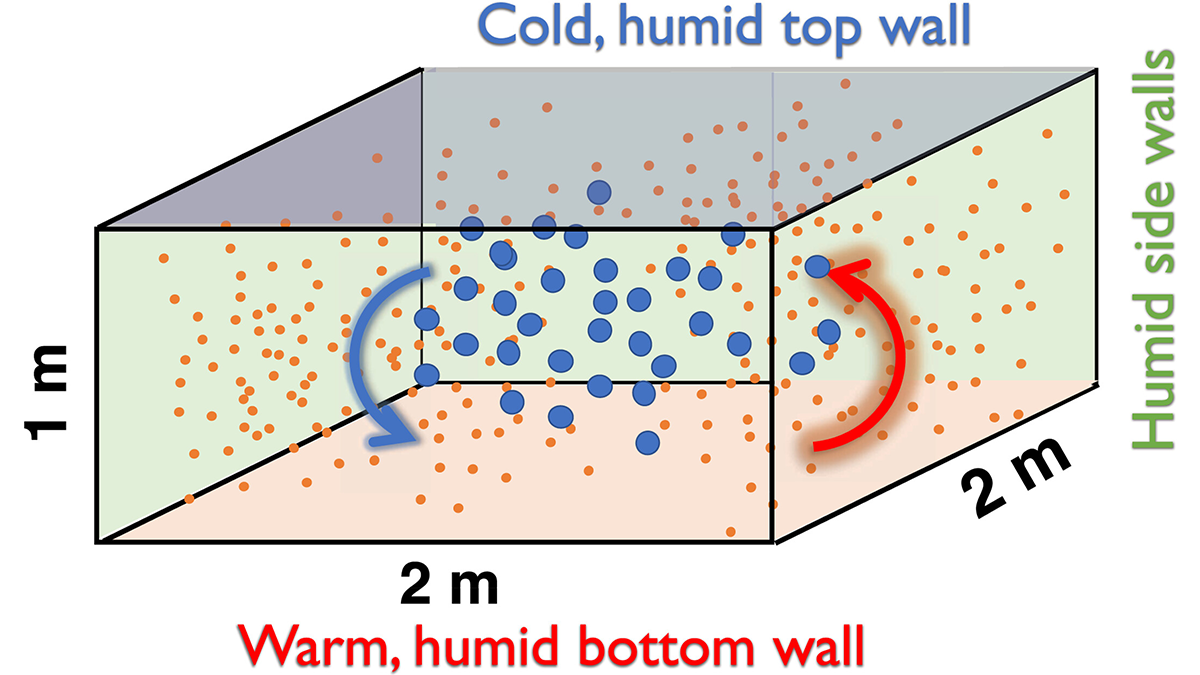Editors’ Highlights are summaries of recent papers by AGU’s journal editors.
Source: Journal of Advances in Modeling Earth Systems
What determines whether a cloud produces rain? This question has been challenging atmospheric scientists for decades due to difficulties in validation with real-world observations alone.
Chen et al. [2025] used the Pi Cloud Chamber at Michigan Technological University to provide steady, repeatable laboratory measurements for a range of aerosol injection rates. The scientists tested high-resolution numerical models of varying complexity, from a one-dimensional turbulence model to 3D large-eddy-simulations. Each model simulated how rapidly injected aerosols activate into droplets, grow, and fall out within the turbulent, moist chamber.
All models exhibited similar trends in droplet number concentration and mean droplet size in response to variations in the aerosol injection rates, but the exact values for a given injection rate differed greatly. These differences arose from how models represented processes such as droplet formation, particle loss through chamber’s bottom and sidewalls, near-wall moisture exchange, and turbulence properties. Despite these disparities, the models agreed on key scaling relationships between aerosol injection rates and droplet properties, consistent with both chamber measurements and theory.
The results highlight the unique value of laboratory facilities for benchmarking and improving cloud microphysics in models and point to priorities for future work to better constrain models and reduce uncertainty. More broadly, this first-of-its-kind model intercomparison demonstrates how laboratory measurements can inform and improve model representation of cloud-aerosol interactions.
Citation: Chen, S., Krueger, S. K., Dziekan, P., Enokido, K., MacMillan, T., Richter, D., et al. (2025). A model intercomparison study of aerosol-cloud-turbulence interactions in a cloud chamber: 1. Model results. Journal of Advances in Modeling Earth Systems, 17, e2024MS004562. https://doi.org/10.1029/2024MS004562
—Jiwen Fan, Editor, JAMES

